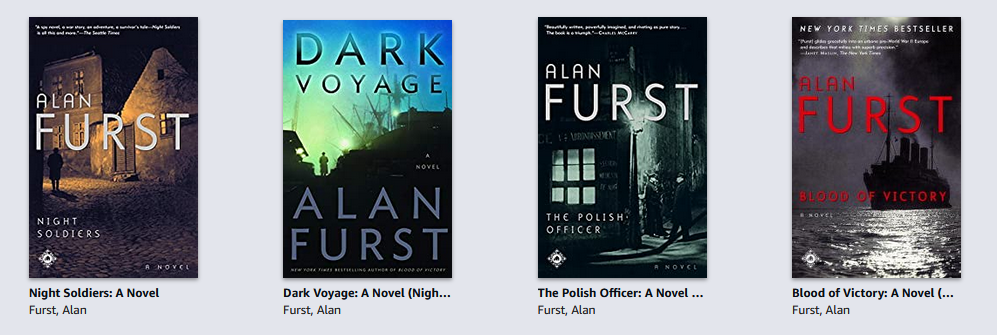Over a decade ago, Tactics Ogre for the PSP combined a branching story, a serious, low fantasy setting, beautiful art, and engaging battles to become one of my favourite games.
Triangle Strategy, I think it’s fair to say, aspires to succeed Tactics Ogre and the genre’s other classic, Final Fantasy Tactics. It takes many of the same elements and adds its own twists, such as a morality system and more intricate rules for positioning, while simplifying others, such as character classes. So far, it’s very good; after 12-13 hours, I’m up to chapter 7, the sequence featured in the game’s first demo, last year. Whether it achieves greatness will depend on how the story plays out.
Here’s what I like, and here’s where I see room to improve:
The pros:
Art, aesthetic, atmosphere — The beautiful, moody art of Triangle Strategy is integral to the experience. Character portraits are striking and evocative. The sprites and the overall “look and feel” call to mind Final Fantasy Tactics and Tactics Ogre, and make the implicit promise that this will tell a similar story.
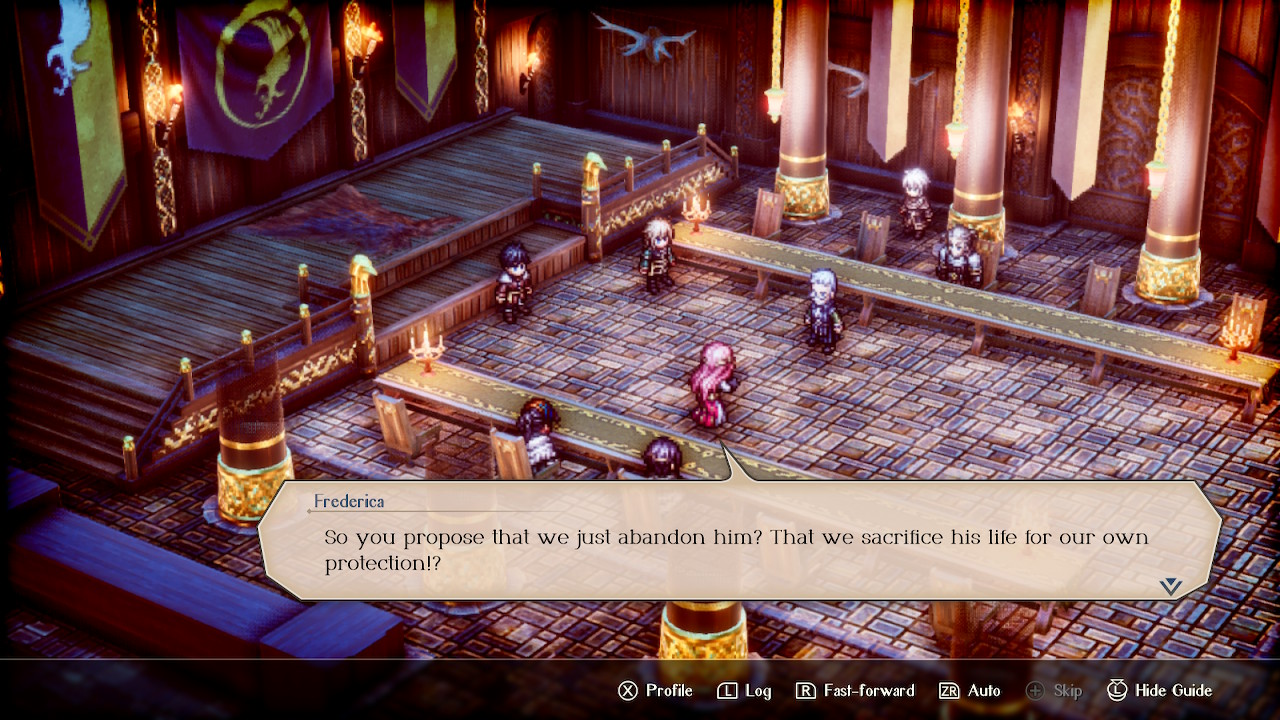
Tactics matter — This includes positioning and using character abilities to support one another. For instance, one fairly tight map channelled combatants down three paths, with a group of enemies along each path. I held one flank using an ice mage and a durable melee fighter: I ran the melee fighter at them, used his special ability to draw the enemies’ ire, and had the mage retreat while lobbing ice at enemy soldiers who had bunched up to attack his friend.
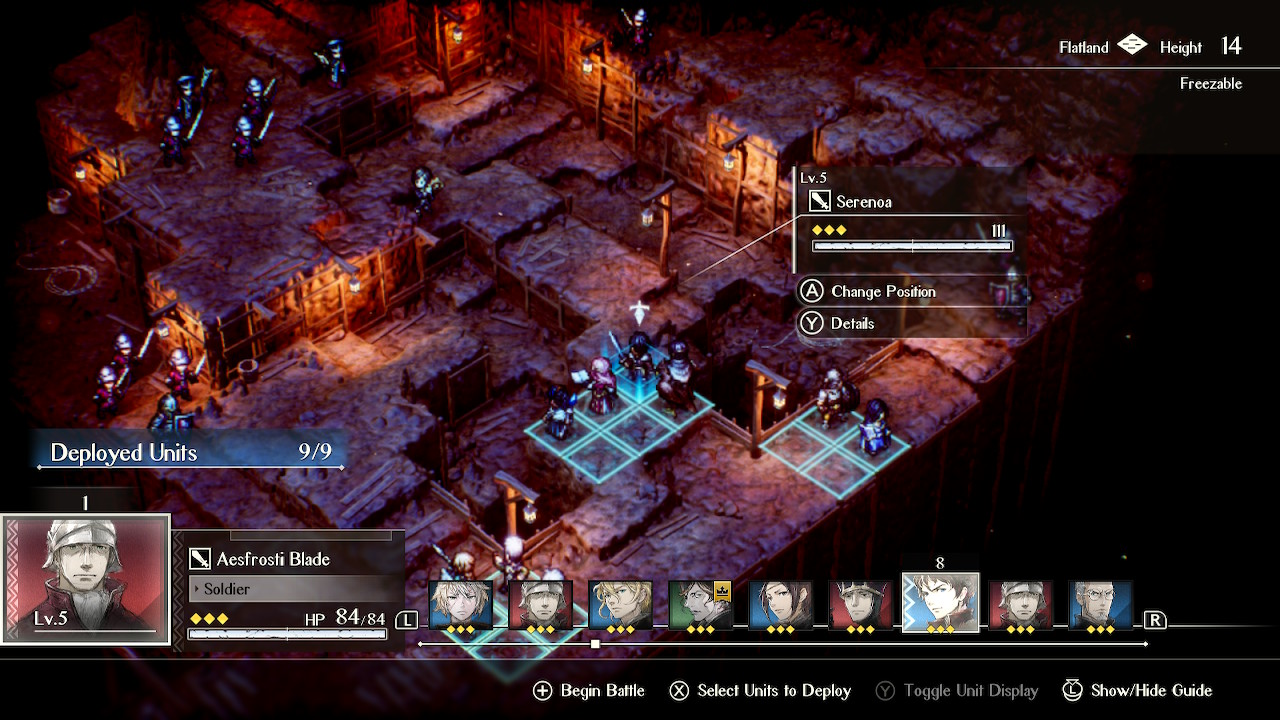
Difficulty feels about right — Playing on Normal, I’ve never been stuck. I did lose a couple of battles as a result of becoming careless; afterwards, it was obvious what I did wrong (rushing a mission-critical character into positions where he could be swarmed). I may even turn up the difficulty to Hard, and see what happens…
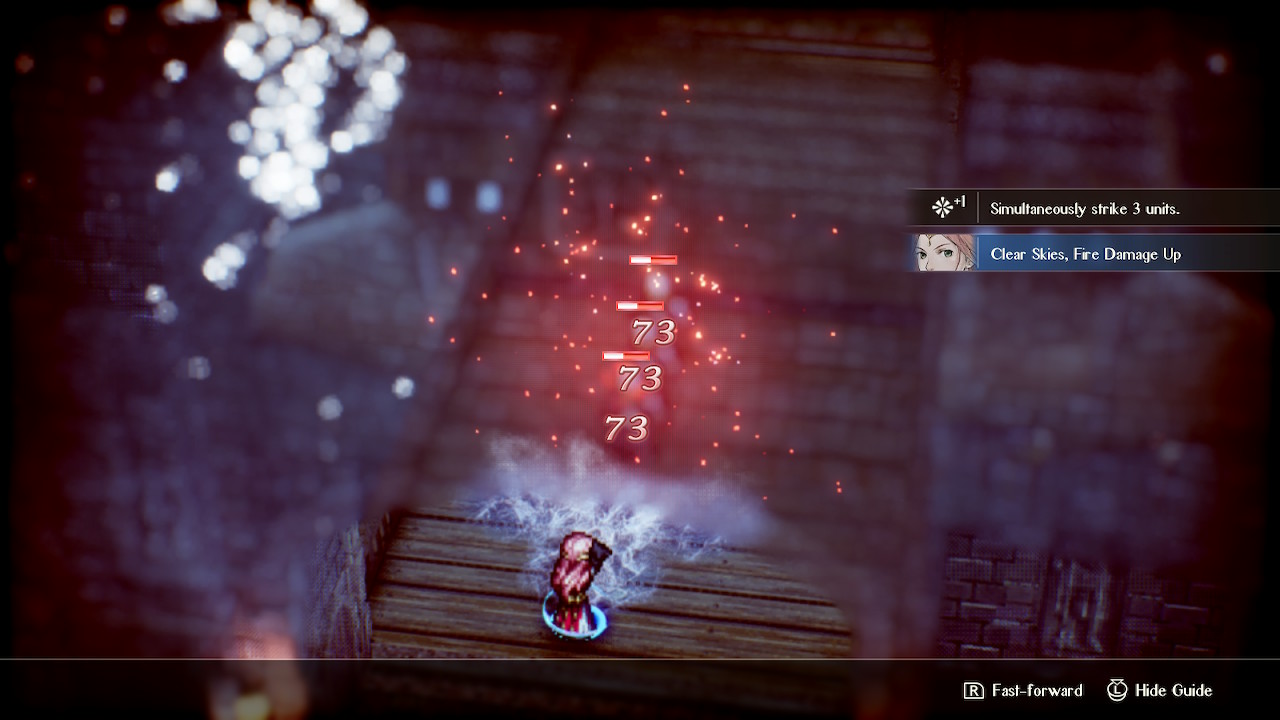
Not grindy! — There is hardly any grinding in Triangle Strategy — a big change from the very grindy Final Fantasy Tactics and Tactics Ogre. Enemies’ levels are fixed, under-levelled characters are very quick to gain experience, and conversely, over-levelled characters gain very little experience. Thus, there’s no need to spend too much time in practice battles.
The intriguing:
How will the story develop? — One of Triangle Strategy’s headline features is the branching story, with decisions settled by a vote among the party members. The player can try to persuade other characters to change their minds, but may not succeed. It’s even possible for persuasion attempts to backfire — I once saw a previously “undecided” party member do the opposite of what I wanted, after my dialogue choices fell flat. I’m interested in what the game will do with this system — can its narrative live up to the classics?
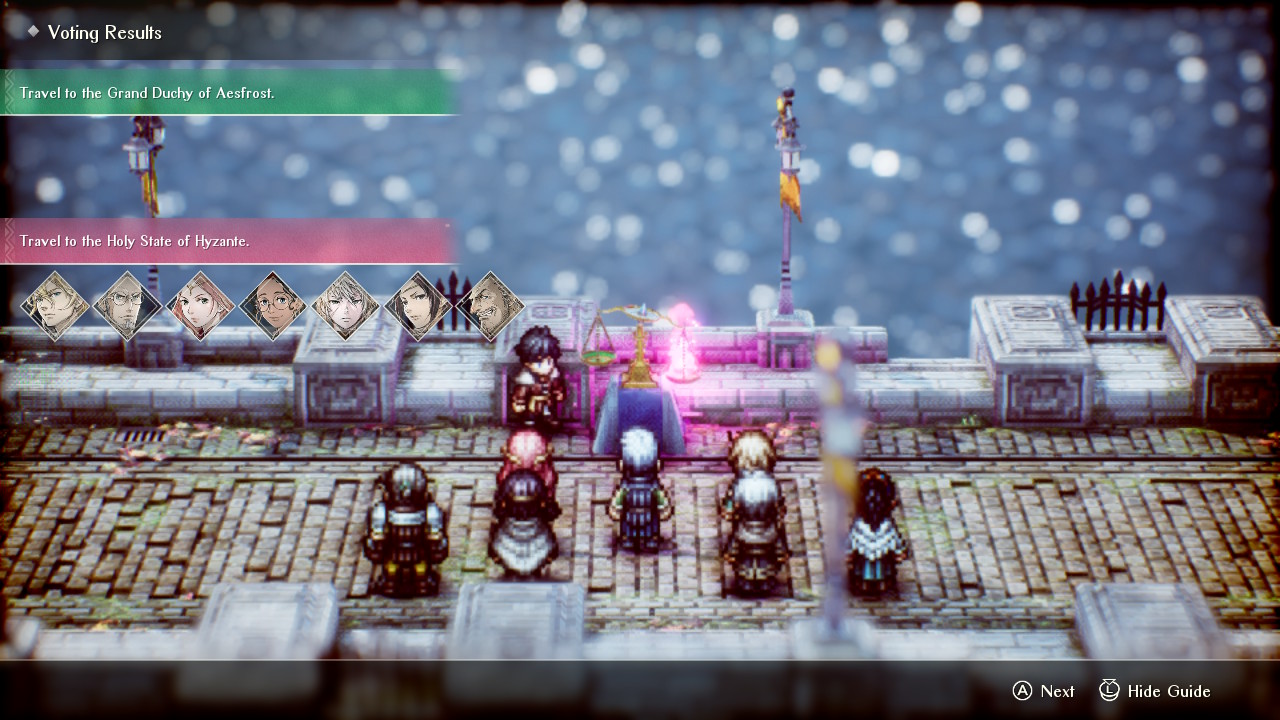
The mixed:
Voice acting — This isn’t a blanket case of English vs Japanese voices (I’ve listened to both):
- In both languages, the heroes sound pretty good.
- I think the female characters generally sound better in English — a couple of the Japanese VAs sound a bit too girlish. Conversely, some of the male characters sound too hammy in English and better in Japanese.
- I am not a fan of the exaggerated voice acting for the villains, who range from “cartoon supervillain” to “oleaginous, obvious traitor”.
The gripes:
Save game slots — Triangle Strategy has 10 save game slots. I’d like more, especially so I can explore different dialogue choices while preserving old saves.
Did the otherwise good English localisation have to owe such an obvious debt to ASOIAF? — I am heartily sick of “sers”.
Enjoy the site? Subscribe below to receive email notifications:
